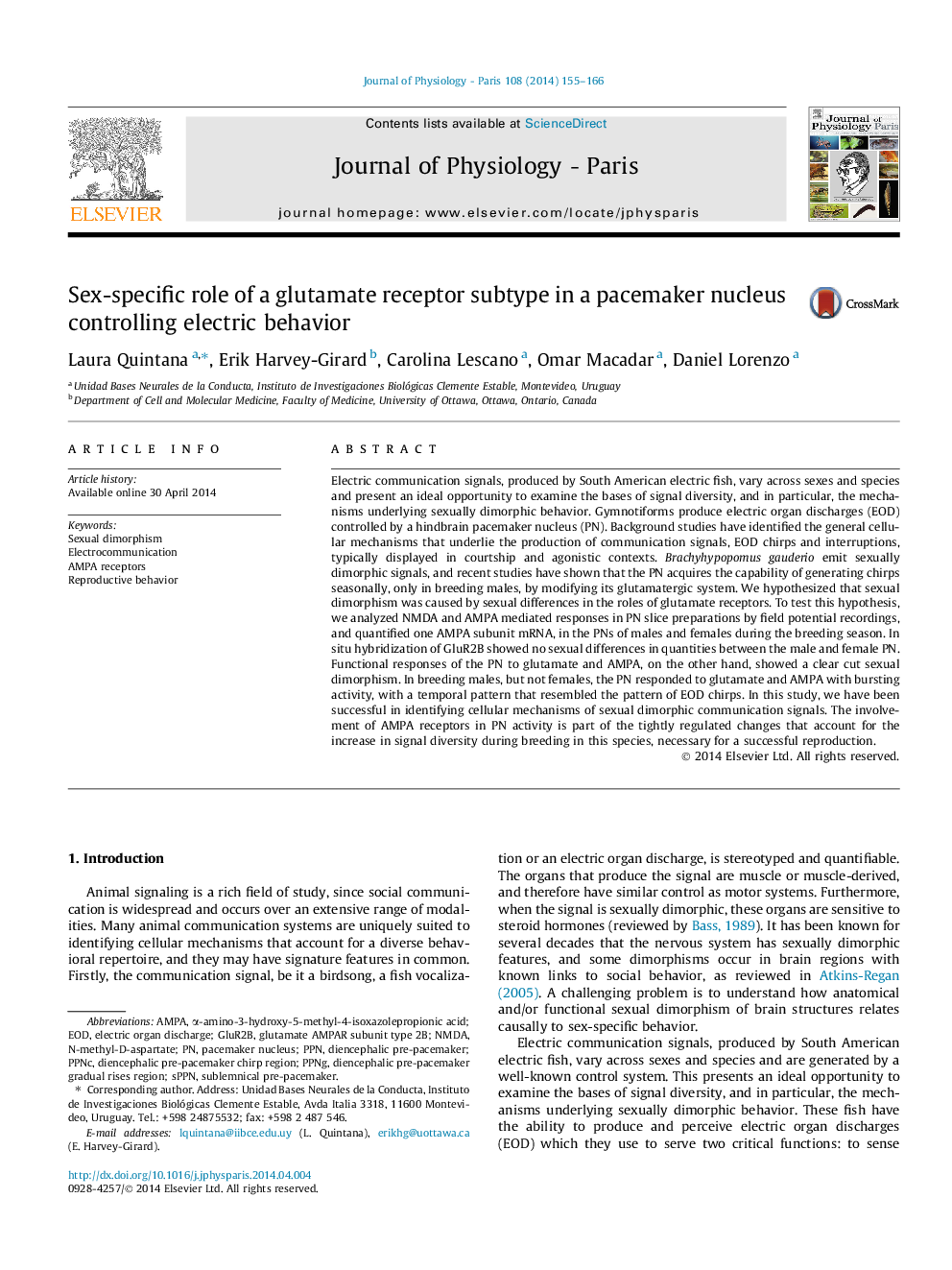| Article ID | Journal | Published Year | Pages | File Type |
|---|---|---|---|---|
| 2842249 | Journal of Physiology-Paris | 2014 | 12 Pages |
•Cellular basis of sex-specific communication signals lie in the pacemaker nucleus.•Electrophysiological responses of the PN to AMPA were sex-specific.•Relay neurons are likely candidates to display this AMPA-mediated sexual dimorphism.
Electric communication signals, produced by South American electric fish, vary across sexes and species and present an ideal opportunity to examine the bases of signal diversity, and in particular, the mechanisms underlying sexually dimorphic behavior. Gymnotiforms produce electric organ discharges (EOD) controlled by a hindbrain pacemaker nucleus (PN). Background studies have identified the general cellular mechanisms that underlie the production of communication signals, EOD chirps and interruptions, typically displayed in courtship and agonistic contexts. Brachyhypopomus gauderio emit sexually dimorphic signals, and recent studies have shown that the PN acquires the capability of generating chirps seasonally, only in breeding males, by modifying its glutamatergic system. We hypothesized that sexual dimorphism was caused by sexual differences in the roles of glutamate receptors. To test this hypothesis, we analyzed NMDA and AMPA mediated responses in PN slice preparations by field potential recordings, and quantified one AMPA subunit mRNA, in the PNs of males and females during the breeding season. In situ hybridization of GluR2B showed no sexual differences in quantities between the male and female PN. Functional responses of the PN to glutamate and AMPA, on the other hand, showed a clear cut sexual dimorphism. In breeding males, but not females, the PN responded to glutamate and AMPA with bursting activity, with a temporal pattern that resembled the pattern of EOD chirps. In this study, we have been successful in identifying cellular mechanisms of sexual dimorphic communication signals. The involvement of AMPA receptors in PN activity is part of the tightly regulated changes that account for the increase in signal diversity during breeding in this species, necessary for a successful reproduction.
